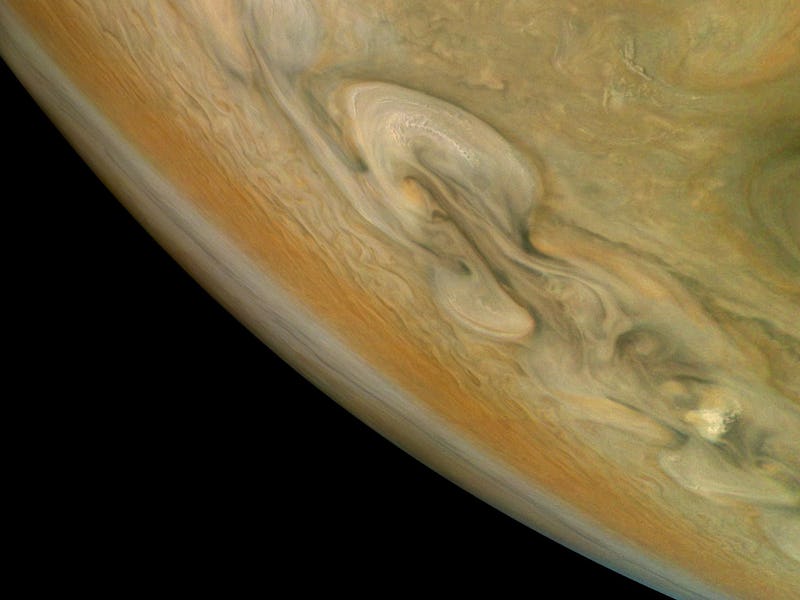Jupiter Looks Like a "Creamy Latte" in This Oddly Soothing New Image
It looks like your frappe.

No, that isn’t a close-up shot of that $7 latte from the hipster coffee spot by your place; it’s just Jupiter lookin’ like a whole snack.
The largest planet in our solar system has been really posing for us lately as NASA’s Juno probe — a spacecraft that has been orbiting the gas giant since July 2016 — completes its tenth close flyby of the planet. This is one of a series of images the probe took on December 16, 2017, as it was 5,600 miles from Jupiter’s cloud tops.
Instead of focusing on the planet’s Great Red Spot — a huge, swirling storm that has been observed for centuries — this shot was snapped as Juno whirled above Jupiter’s northern hemisphere, looking south. This gives us a whole new look at another silky angle of the gas giant.
Jupiter's northern polar belt region taken by NASA's Juno spacecraft.
The image was enhanced and cropped by citizen scientist Björn Jónsson by using data from the JunoCam imager. The original captured shot is archived on NASA’s site for the Juno mission.
While this image is soothing from a safe distance, what’s actually going on underneath the planet’s atmosphere is less than relaxing. Jupiter is essentially one monolithic ball of hydrogen and helium. All of those seemingly creamy layers that the gas giant is known for are actually bands of whirling gas.
The deeper you delve into the planet, the more pressurized everything becomes, according to NASA. The pressure is so great that gaseous hydrogen is compressed into a vast ocean of liquid metallic hydrogen, deep under Jupiter’s clouds. This sea of liquid metal generates the strongest magnetic field in all of our solar system. This is a contributing factor to why our planetary neighbor has a total of 53 moons.
Luckily, we can safely observe Jupiter from afar without having to worry about getting sucked into its hellish atmosphere. Juno still needs to complete at least 27 more orbits around the planet before its mission is over, so stay tuned for some more jaw-dropping images from this side of our solar system.